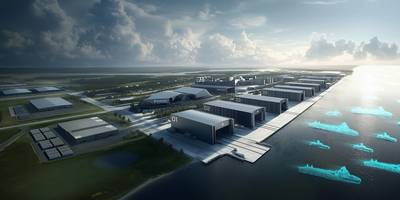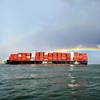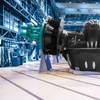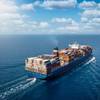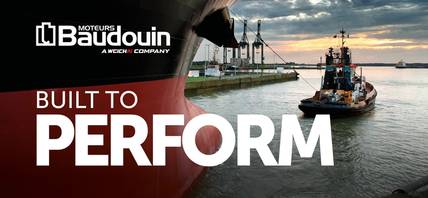From SEAL Team Six to Silicon Valley, Inside Saronic's Shipbuilding Mission
In a shipbuilding industry defined by tradition, one new entrant is seeking to rewrite the rules of how naval vessels are designed, built and delivered. Saronic Technologies, founded just three years ago, is racing to create what CEO Dino Mavrookas calls “a next-generation shipbuilding ecosystem” — one capable of delivering unmanned surface vessels (USVs) at the speed and scale the U.S. and its allies will need to compete on tomorrow’s seas.
Saronic Technology’s ambition is staggering: a vertically integrated, AI-driven maritime manufacturer with its own shipyards, proprietary software stack, and thousands of employees, all funded by nearly $1 billion in private capital rather than government seed money. Its target customer: a commercial-driven product line-up but ultimately the U.S. Navy, which is shifting toward a hybrid fleet of manned and unmanned platforms to deter peer adversaries like China and Russia.
“We’re redefining maritime superiority,” Mavrookas said. “The question isn’t if the Navy will adopt autonomy at scale—it’s how fast we can deliver the technology and production capacity to make it real.”
- From SEAL Team Six to Silicon Valley—and Back to the Sea
Mavrookas’s own path mirrors the convergence of defense and high technology shaping modern shipbuilding. A former U.S. Navy SEAL who served 11 years, including five years with SEAL Team Six, he transitioned into finance after leaving the service in 2015, investing in software and technology companies. But by 2022, he felt drawn back toward defense.
“I left my private-equity job in March 2022 to start a defense tech company,” he recalled. “Six months later we launched Saronic to redefine maritime superiority.”
Within its first three years, the company raised close to $1 billion, expanded to nearly 1,000 employees, and opened eight locations: six in the U.S. and two overseas. Headquarters are in Austin, Texas, where two production campuses cover over 600,000 square feet and are capable of producing thousands of small USVs annually. A recently acquired 4.4-million-square-foot shipyard in Franklin, Louisiana is already building 180-foot autonomous ships, while design work is under way for Port Alpha, a greenfield “next-generation shipyard” that will dwarf Franklin’s capacity.
“We’re taking everything we learn in Franklin and magnifying it by ten,” Mavrookas said. “Port Alpha will be the largest and most efficient shipyard anywhere in the world to bring new capacity online right here in the United States.”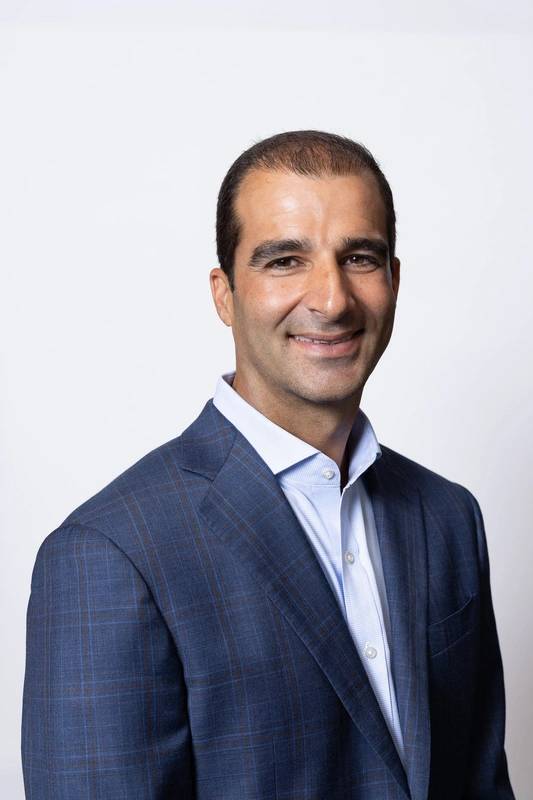 “Our competitor is China, point-blank, period. For every 230 ships they build, the U.S. builds one. We need investment across the board—into legacy yards, new infrastructure, and advanced autonomy. The question is how to bring capacity online fast enough.”
“Our competitor is China, point-blank, period. For every 230 ships they build, the U.S. builds one. We need investment across the board—into legacy yards, new infrastructure, and advanced autonomy. The question is how to bring capacity online fast enough.”
Dino Mavrookas, CEO, Saronic Technologies
- Vertical Integration as a Weapon
Saronic’s business model turns the traditional naval procurement process on its head. Instead of waiting for Navy contracts to fund research and development, Saronic builds its vessels and autonomy stack with private capital, creating ready-to-deliver products.
“When a prime says it needs a demand signal, it usually means waiting for a funded contract,” Mavrookas said. “We’re doing the opposite: investing millions of our own dollars in R&D, building ships first, proving capability, then selling at scale.”
That “commercial-first” strategy also enables exports to allies and adaptation to civil markets such as offshore logistics, port and harbor security, and energy infrastructure. Every Saronic product is designed for dual-use flexibility, built to commercial standards, engineered to military specifications.
At the core of this speed is vertical integration. “We control every component,” Mavrookas said. “Hardware, software, manufacturing, and production. That’s what allows us to move fast and scale.”
By designing hulls specifically for autonomy, Saronic simplifies construction and reduces cost. “There are only so many hull forms in history,” he said, “but there haven’t been many designed from first principles for autonomy.” Simpler structures mean fewer components, faster builds, lower cost, and easier replication, all crucial to matching China’s shipyard output, which Mavrookas notes outpaces the U.S. 230 to 1.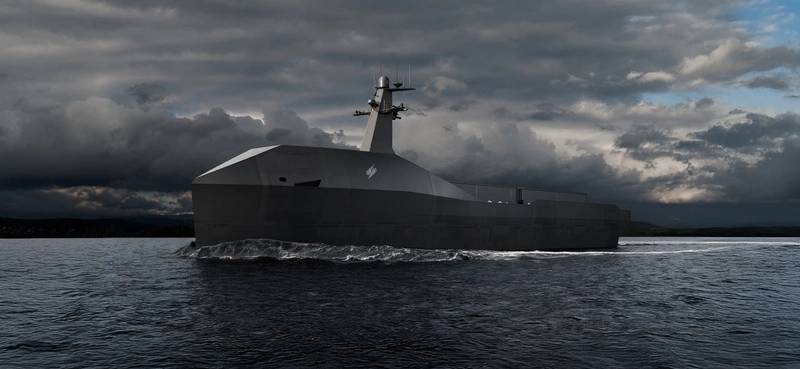 Image courtesy Saronic Technologies
Image courtesy Saronic Technologies
- The Lineup
According to company materials, Saronic has six USV classes in development, spanning from the six-foot Spyglass to the 150-foot Marauder, which is under construction in Louisiana.
| Vessel | Length (ft) | Range (nm) | Payload (lb) | Top Speed (knots) | Status |
| Spyglass | 6 | 30 | 40 | 20 | Built & tested |
| Cutlass | 14 | 300 | 200 | 20 | Built & tested |
| Corsair | 24 | 1000 | 1000 | 35 | Built & tested |
| Mirage | 40 | 2000 | 2000 | 35 | In Development |
| Cipher | 60 | 3000 | 10000 | 35 | In Build |
| Marauder | 150 | 3500 | 80000 | 18 | Keel Laid August 2025 |
The company plans to produce 200 unmanned craft per year once full production is achieved. The smaller vessels can be launched from ships, beaches, or even air-drops; larger ones carry standard 20- and 40-foot containers to support modular payloads.
Each vessel integrates Saronic’s proprietary Echelon command-and-control system, a digital interface that unifies mission planning, sensor data, and real-time fleet management—even in GPS- or communications-denied environments. “Echelon is our brain,” CTO Vibhav Altekar told CBS earlier this year. “It’s the connective tissue that lets dozens or hundreds of USVs operate autonomously in coordination.”
- The Customers and the Competition
The U.S. Navy remains Saronic’s primary target. Its long-term fleet plan calls for 78 large USVs, 56 medium USVs, and 56 extra-large UUVs over the coming decades, backed by billions in congressional funding for autonomy and shipyard modernization. The Marine Corps, Coast Guard, and Customs and Border Protection are also experimenting with USVs for logistics, reconnaissance, and coastal defense.
Beyond the U.S., Saronic has opened offices in Sydney, Canberra, London, and Portsmouth to engage with AUKUS partners and other NATO allies. “Australia and the UK are natural extensions,” Mavrookas said. “We’re already shipping boats there.”
Commercial applications will follow once defense production stabilizes. “We see opportunities in short-haul cargo, offshore energy, and port security,” he said, “where autonomy can deliver immediate efficiency.”
As for competitors, Mavrookas is blunt:
“Our competitor is China, point-blank, period. For every 230 ships they build, the U.S. builds one. We need investment across the board—into legacy yards, new infrastructure, and advanced autonomy. The question is how to bring capacity online fast enough.”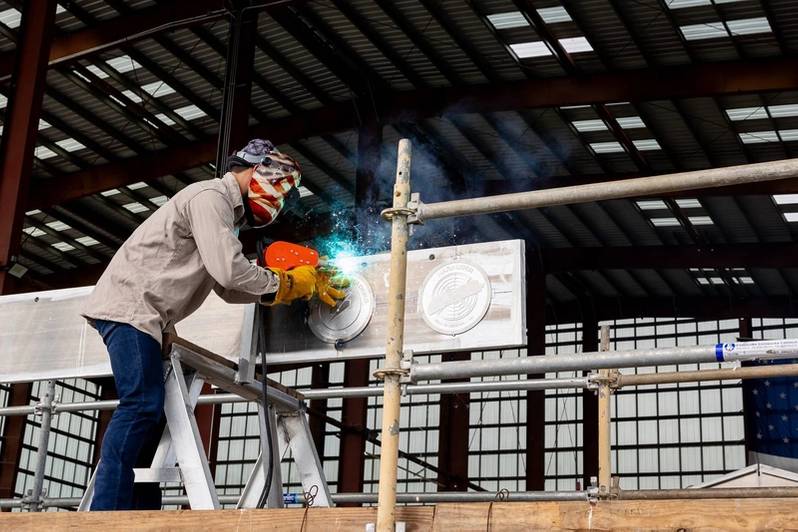 A recently acquired 4.4-million-square-foot shipyard in Franklin, Louisiana is already building 180-foot autonomous ships.
A recently acquired 4.4-million-square-foot shipyard in Franklin, Louisiana is already building 180-foot autonomous ships.
Image courtesy Saronic Technologies
- Port Alpha and the Race for Capacity
In addition to autonomy, speed is Saronic’s obsession. The company acquired the Franklin, Louisiana, yard in April 2025 and began hull construction within 90 days; its first 180-foot USV is expected to enter testing by early 2026. Lessons learned there will feed directly into Port Alpha, envisioned as an autonomous shipyard “designed to build unmanned ships for the hybrid fleet.”
Saronic has already invested $250 million to modernize Franklin and plans to invest billions more in Port Alpha. The concept combines modular construction, automation, and digital-twin oversight to drastically shorten production cycles. If successful, it could transform U.S. shipbuilding economics by reducing the cost and timeline of major combatants by orders of magnitude.
“Destroyers cost $2 billion and take six to eight years to make,” Mavrookas said. “We have to drive both cost and time way down—and have the supply chain that can replace platforms if we ever get into a conflict.”
- Lessons Learned from Russia’s War with Ukraine
Few events accelerated Saronic’s trajectory more than Ukraine’s 2022 USV strikes on the Russian Black Sea Fleet. “Before that,” Mavrookas said, “the Navy saw autonomy mostly as research. After that, everything changed.”
The attacks demonstrated how small, inexpensive unmanned craft could neutralize traditional naval power. For Mavrookas, the lesson was clear: effectiveness depends on both autonomy software and mass production. “The Ukrainians immobilized the Russian fleet without having a navy,” he said. “In the Indo-Pacific, scale will be the difference—thousands of small platforms, hundreds of larger ones. To deter China, we have to out-build China.”
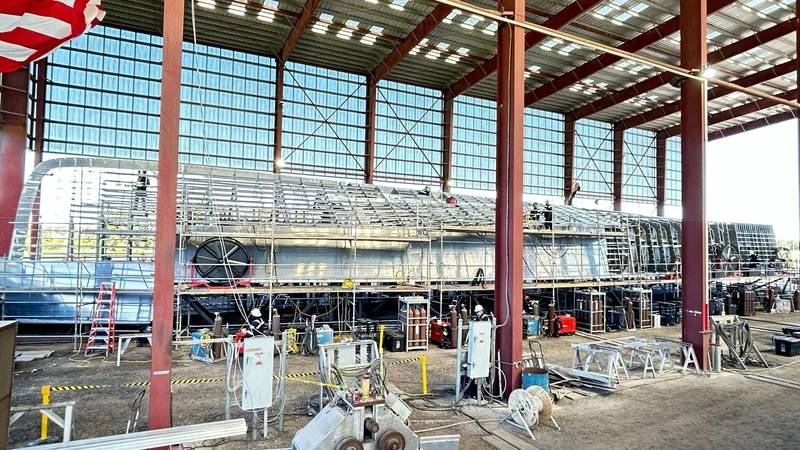 A recently acquired 4.4-million-square-foot shipyard in Franklin, Louisiana is already building 180-foot autonomous ships.
A recently acquired 4.4-million-square-foot shipyard in Franklin, Louisiana is already building 180-foot autonomous ships.
Image courtesy Saronic Technologies
- Partnerships & Capital Power
Saronic’s rise has attracted heavyweight partners. It has MOUs with ABS to explore autonomous classification frameworks, Vigor Marine to expand small-vessel fabrication, and Palantir Technologies to fuse AI-driven analytics into fleet operations.
Its investor list reads like a who’s-who of Silicon Valley venture capital: Andreessen Horowitz, 8VC, Point72 Ventures, Lightspeed, Elad Gil, General Catalyst, and others. The latest Series C round of $600 million valued Saronic at roughly $4 billion, a remarkable figure for a company barely out of startup mode.
That funding underwrites the company’s aggressive infrastructure push. “We can’t expand production fast enough,” Mavrookas said. “The admirals want capacity online yesterday.”
- The Future Fleet
Saronic’s guiding philosophy—commercial speed, military rigor—positions it at the vanguard of a generational shift in maritime defense. Its approach challenges the slow, risk-averse procurement cycles that have long dominated U.S. naval shipbuilding. By investing private capital upfront, Saronic assumes risk traditionally borne by the government—potentially saving taxpayer dollars while accelerating innovation.
Still, scaling from prototypes to hundreds of ships will test even Saronic’s momentum. Supply-chain constraints, regulatory hurdles, and cybersecurity concerns all loom large. Yet the company’s trajectory—and the Navy’s growing urgency—suggest its model may soon become the norm rather than the exception.
“Our mission is to deliver the capacity the U.S. needs for maritime supremacy over the next hundred years,” Mavrookas said. “To do that, we have to move faster than anyone in the world.”
In a sector defined by legacy players and long timelines, Saronic Technologies is betting that speed, integration, and autonomy will define the next era of shipbuilding—and that the shipyard of the future may look less like a drydock and more like a tech campus running 24/7, building fleets of intelligent ships that never sleep.




